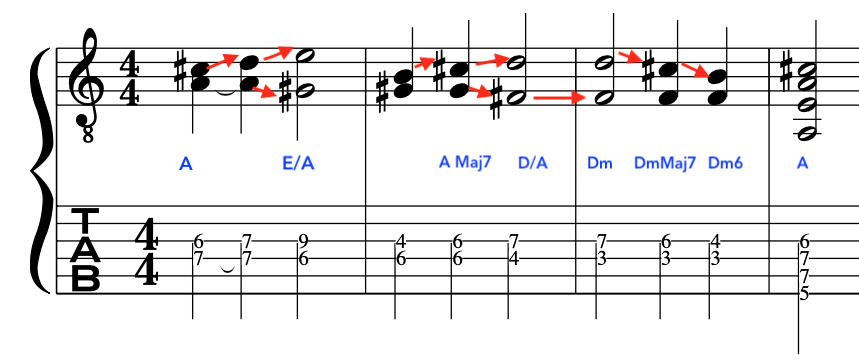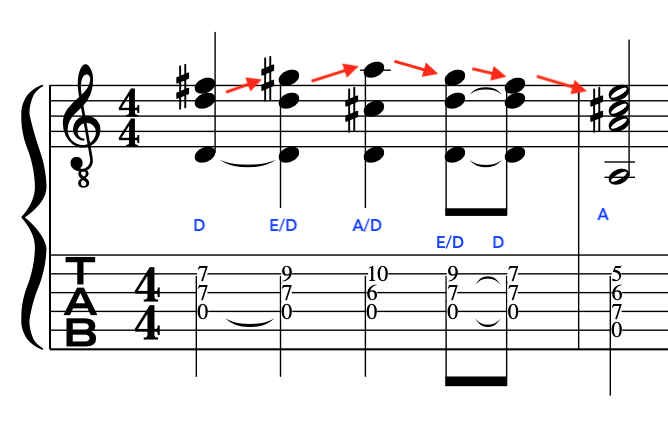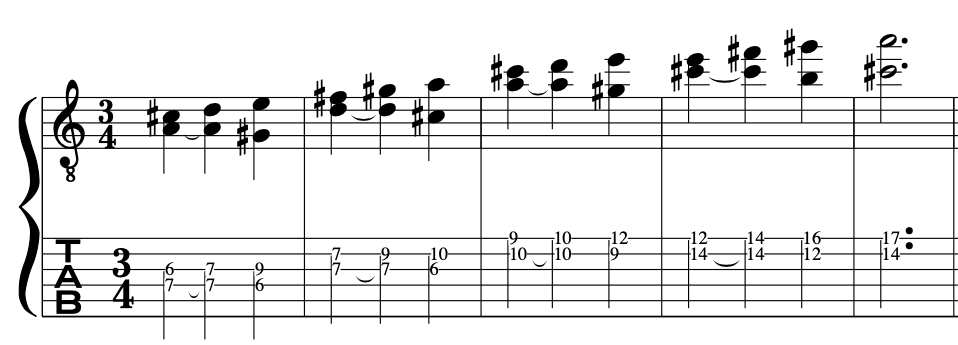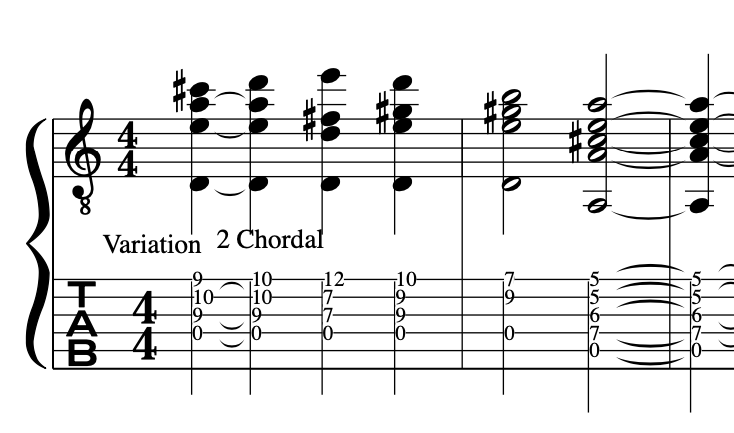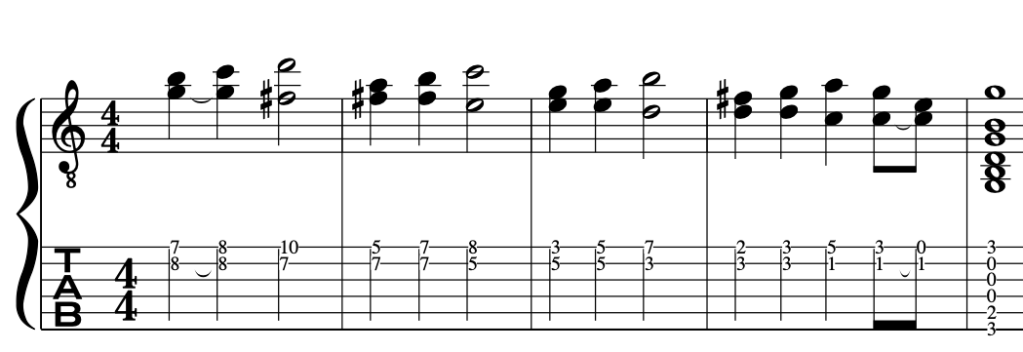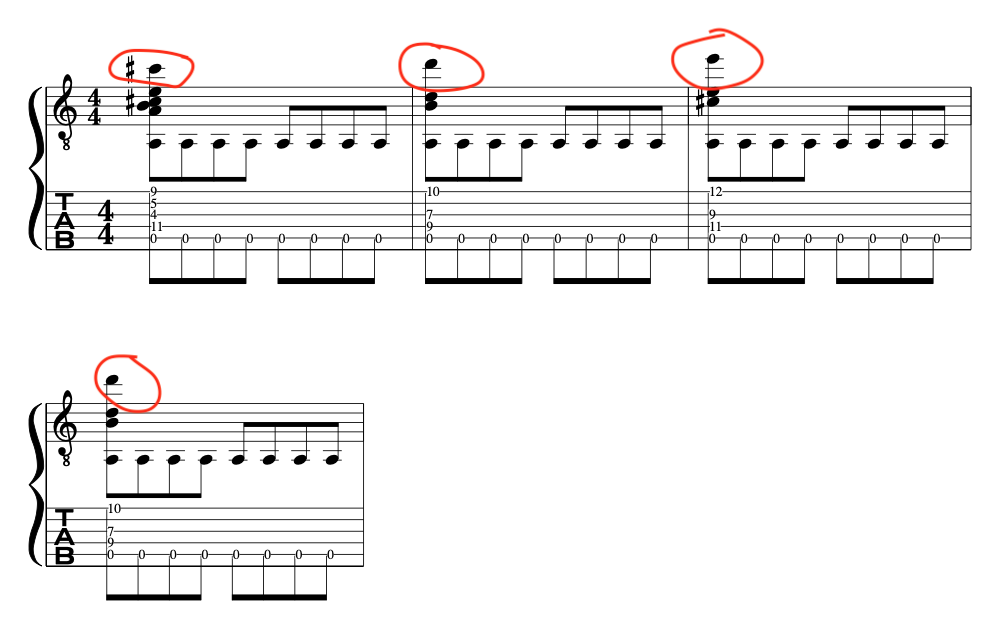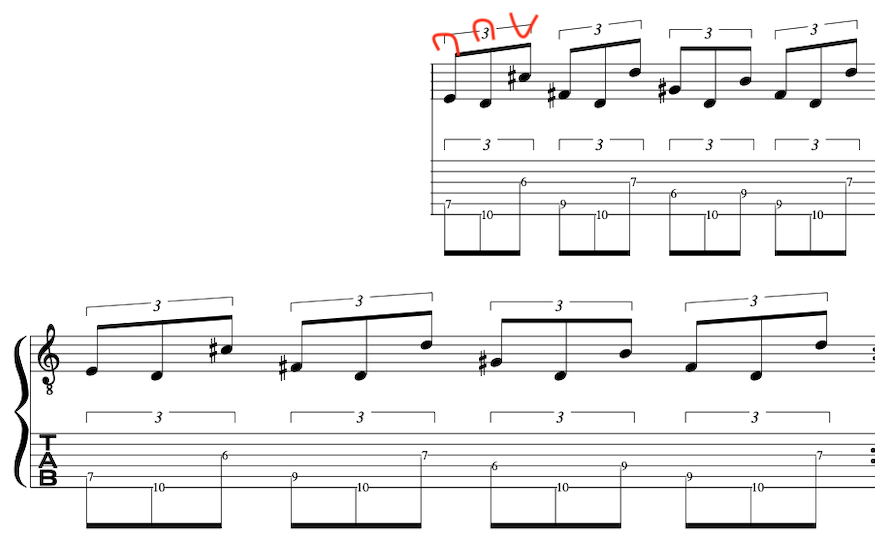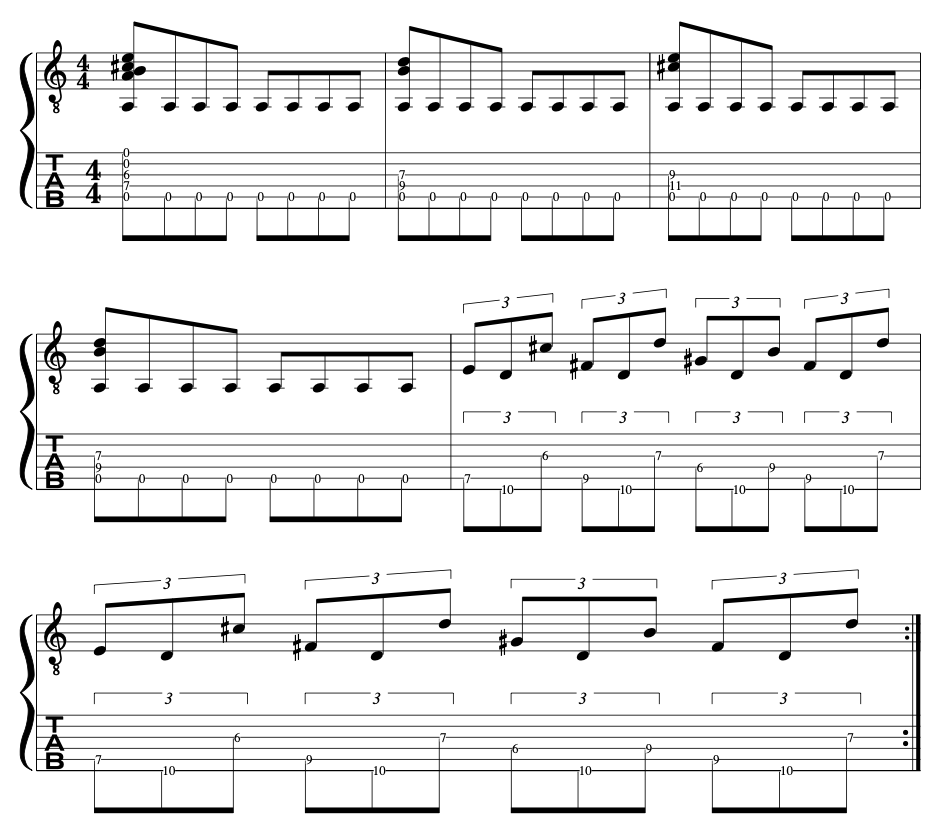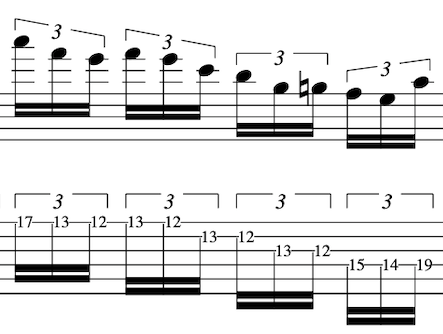
Hi Guys,
Today, a quick look at applying minor-isation for improvisation over a backing track:
This is a very useful way to play over ambiguous harmony or Jazz fusion chord progressions, slash chords and sometimes illogical movement/chord shifts.
So, what do we do? and how does this work?
ANSWER=Employ the minor key for everything!
Let’s say we take this chord FMaj#11 – we will go to chord iii of F Major and use that for our improvisational point. In this case it’s A minor.
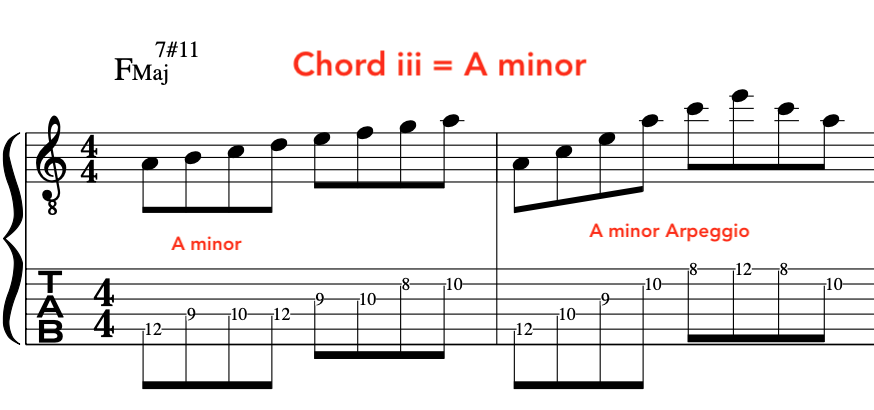
Let’s apply the same principle to DbMaj7#11
If we apply chord iii we have F minor:
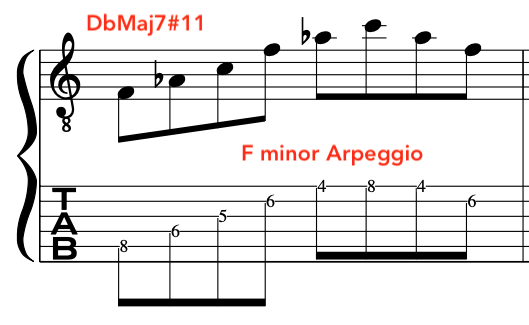
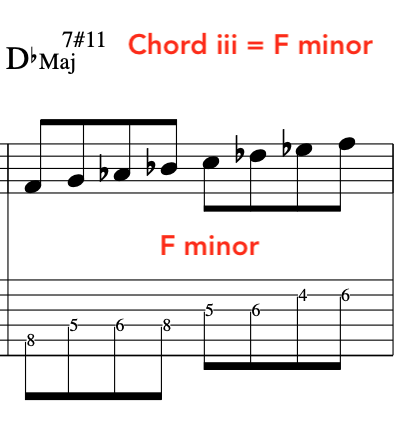
This time we will apply it to B Maj7#11
Chord iii being D#minor [Although I have notated it enharmonically with Eb minor as some people find that easier to visualise on the guitar fingerboard]
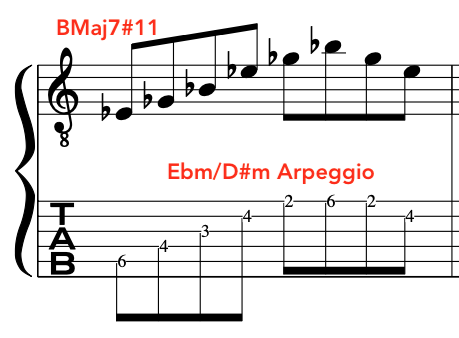
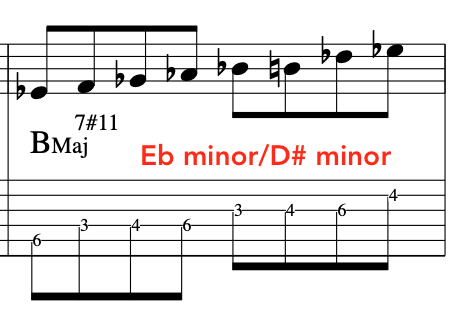
BARS 9 TO 12
In bars 9 to 12 you will see slash chords. For these we will go to chord Vi. So for instance on Db/Eb we will use Bb minor.
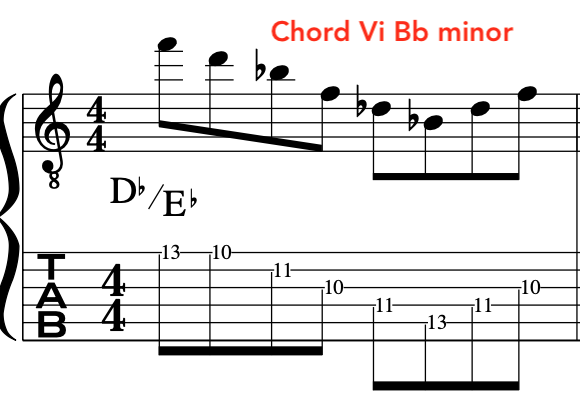
Bars 9 to 11: Chord Vi:

And on C/D chord Vi will be A minor:
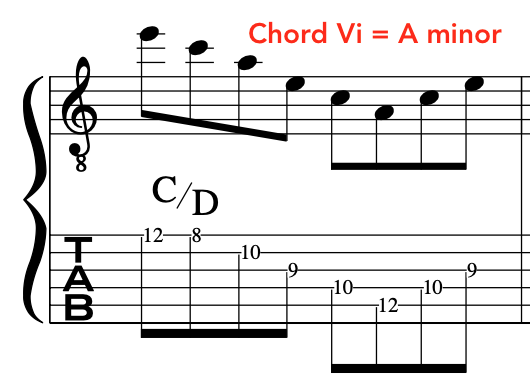
We could also use chord iii as we did in the first 8 bars:
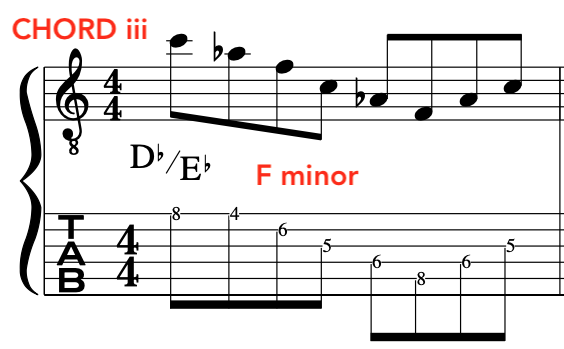
Bars 9 to 11: Chord iii Employed:
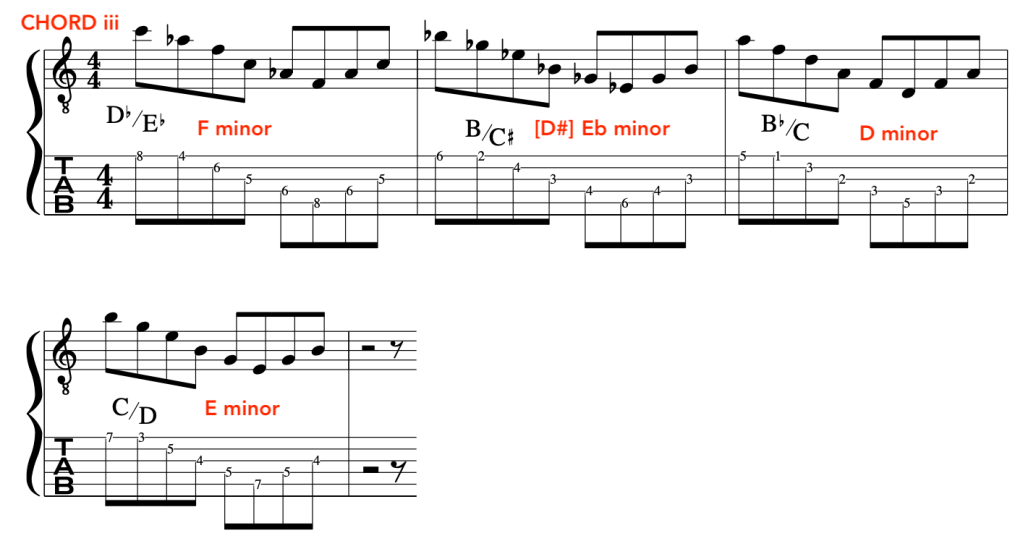
LAST 4 BARS
For the last part we will employ chord iii of Db Major throughout: This of course being F minor:

Here is the chart for the full backing track and you will see how all of this works:
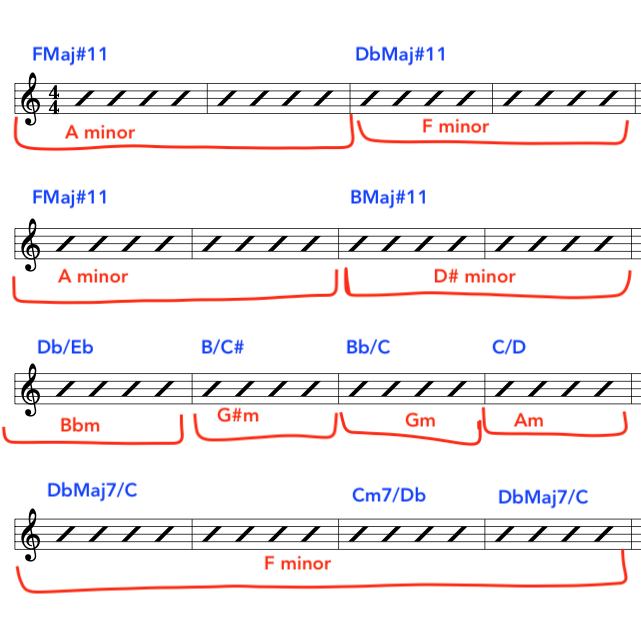
IN CONCLUSION:
This is just a basic example of how “minor-isation” can be exploited to create really fluid improvisation especially on the guitar in a modern smooth jazz fusion context:
FREE PDF DOWNLOAD:
IF THIS LESSON WAS OF USE TO YOU THEN PLEASE SUBSCRIBE TO US BELOW ON YOUTUBE, THANKS!


